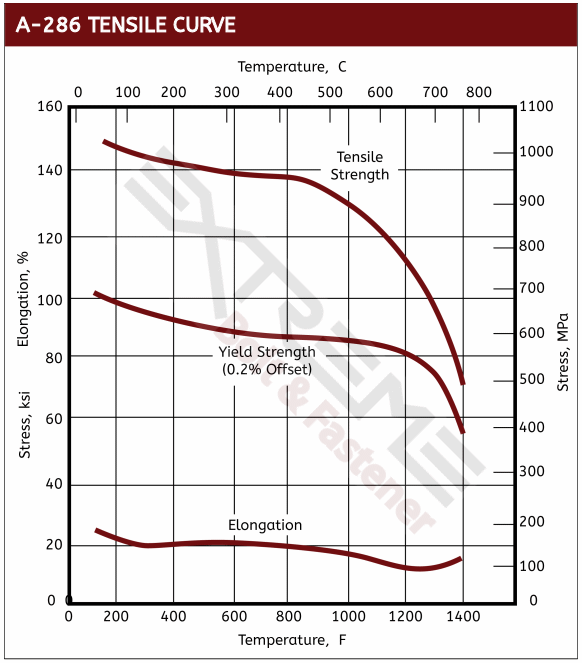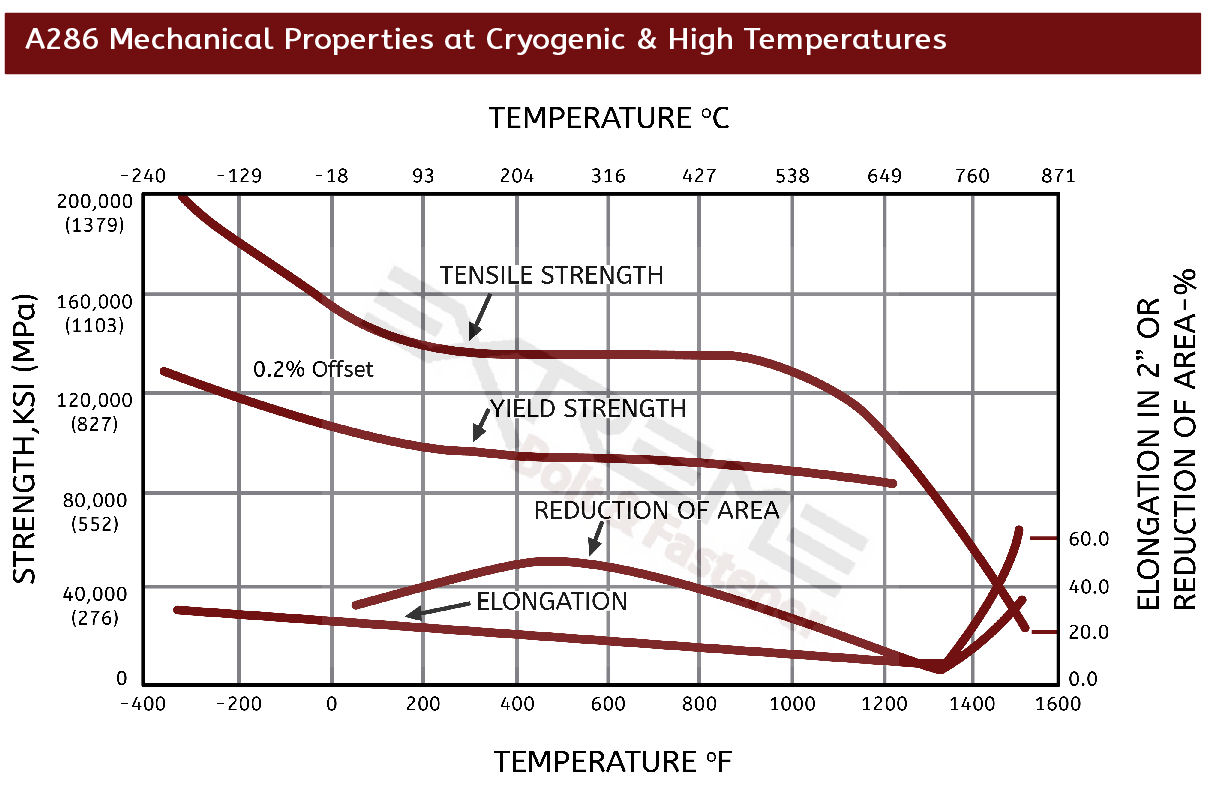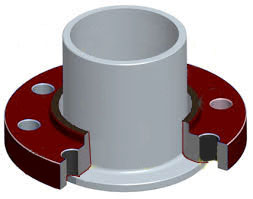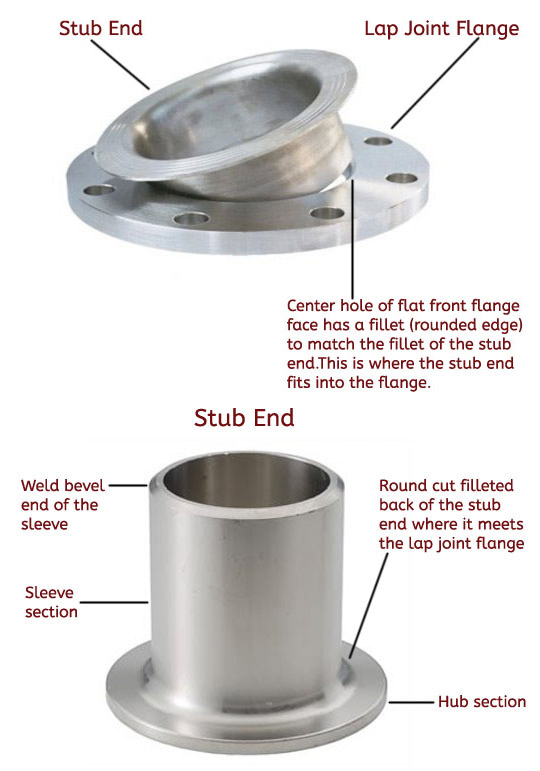A286 Bolts
A286 / Alloy 660 (1.4980) for excellent high temperature oxidation resistance
- Excellent high temperature oxidation resistance to 1300°F / 700°C

- Maintains high strength at elevated temperatures
- Specs & heat treatments
- A286 Chemistry
- ASTM A453 Grade 660 and ASTM F2281
- Cryogenic Properties of A286
- A286 Datasheet
A286 (1.4980) bolts, also known as Alloy 660 bolts are stainless steel alloy which contains iron, nickel and chromium. A286 bolts are known for their high strength, creep resistance and oxidation resistance at elevated temperatures once age hardened. As a result, A286 bolts provide high levels of strength from room temperature up to about 1300°F (700°C).
A286 bolts are also mildly corrosion resistant. While they should not be used for strong acid environments, they provide excellent oxidation resistance up to 1500°F (815°C) in conditions that would typically be found in high temperature exhaust streams.

Cryogenic Capabilities
A286 bolts are not only usable for high temperatures, it can also be used for subzero applications. Since it remains ductile at cryogenic temperatures, it can be a good choice for non-magnetic strength down to around -320°F. Click here to view a chart on the mechanical properties of A286 bolts at cryogenic temperatures
Applications
Because of the properties of Alloy 660 / A286, these bolts are often found in high temperature engine, manifold, exhaust and turbine applications as well as off-shore oil & gas applications. In addition, A286 / Alloy 660 is also non-magnetic and finds a niche in non-magnetic cryogenic equipment. Extreme Bolt & Fastener also provides A286 to ASTM A453 Grade 660 specification. This specification ensures accurate standards for tensile and stress rupture properties, which is critical for many high temperature applications.
Resources: A286 Torque Specs
Bolt Types Available: Hex Bolts, Shoulder Bolts
ASTM A453 Grade 660
Material specification ASTM A453 Grade 660 applies to bolts, studs, nuts and other fasteners. It ensures fasteners meet strength standards for use in high temperature bolting applications. ASTM A453 Grade 660 is classified into 4 property classes / heat treatments: A, B, C & D, each designated with different tensile and stress rupture properties. The most common of the ASTM 453 classes are class A or D. The grades A, B and C all have the same minimum tensile strength and minimum yield strength of 130ksi and 85ksi respectively. However grade D has a significantly better yield with a min tensile of 130ksi and a min yield of 105ksi.
Additional A286 / Alloy 660 Specifications, Cold Working & Heat Treatments
AMS A286 / Alloy 660 Heat Treatments
By AMS numbers, the most common for A286 / Alloy 660 is AMS 5737 (same as Grade A) and then AMS 5732 (same as Grade B).
A286 / Alloy 660 Cold Worked Fasteners
For additional strength, A286 could be aged and cold worked to achieve a min ultimate tensile strength of 160ksi upon request.
Additional Specifications
UNS S66286, ASTM A453, AMS 5525, AMS 5726, AMS 5732, AMS 5737, AMS 5804, EN 1.4980, GE B50T1181, GE B50T12, GE B50T81, Werkstoff 1.4980, ASTM F2281
A286 / Alloy 660 Chemistry
Mechanical Properties







